Le Corbusier Biography and Profile
Architect Index / France / Works of Le Corbusier
Born Charles-Édouard Jeanneret, Le Corbusier (6 October 1887 – 27 August 1965) is widely acclaimed as the most influential architect of the 20th century. From private villas to mass social housing projects, his radical ideas, designs, and writings radically reinvented not only individual structures but entire concepts of modern living.
He was born in Switzerland and became a French citizen in 1930. His career spanned five decades, and he designed buildings in Europe, Japan, India, and North and South America.
Like his contemporaries, Frank Lloyd Wright and Mies van der Rohe, Le Corbusier lacked formal architectural training. He was attracted to the visual arts; at age fifteen, he entered the municipal art school in La-Chaux-de-Fonds, which taught the applied arts connected with watchmaking. Three years later, he attended the higher course of decoration, founded by the painter Charles L’Eplattenier, who had studied in Budapest and Paris. Le Corbusier wrote later that L’Eplattenier had made him “a man of the woods” and taught him painting from nature.
In 1925, Le Corbusier combined a series of articles about decorative art from “L’Esprit Nouveau” into a book, L’art décoratif d’aujourd’hui (The Decorative Art of Today). Le Corbusier’s notoriety from his writings and the Pavilion at the 1925 Exposition led to commissions to build a dozen residences in Paris in his “purist style.” In 1927, he was invited by the German Werkbund to build three houses in the model city of Weissenhof near Stuttgart, based on the Citrohan House and other theoretical models he had published. He described this project in detail in one of his best-known essays, the Five Points of Architecture.
The following year he began the Villa Savoye (1928–1931), which became an icon of modernist architecture. Villa Savoye succinctly summed up the five points of architecture that he had elucidated in L’Esprit Nouveau and the book Vers une Architecture, which he had developed throughout the 1920s. First, Le Corbusier lifted the bulk of the structure off the ground, supporting it with pilotis, and reinforced concrete stilts. These pilotis, in providing the structural support for the house, allowed him to elucidate his following two points: a free façade, meaning non-supporting walls that could be designed as the architect wished, and an open floor plan, meaning that the floor space was free to be configured into rooms without concern for supporting walls. The second floor of the Villa Savoye includes long strips of ribbon windows that allow unencumbered views of the large surrounding garden, constituting the fourth point of his system. The fifth point was the roof garden to compensate for the green area consumed by the building and replace it on the roof. Another great residential example of these 5 points can be seen in the Curutchet House.
Dedicated to improving living conditions in crowded cities, Le Corbusier was influential in urban planning and a founding member of the Congrès International d’Architecture Moderne (CIAM). He prepared the master plan for the city of Chandigarh in India and contributed specific designs for several buildings there, especially the government buildings.
On 17 July 2016, seventeen projects by Le Corbusier in seven countries were inscribed in the list of UNESCO World Heritage Sites as The Architectural Work of Le Corbusier, an Outstanding Contribution to the Modern Movement.
Le Corbusier Bibliography – Recommended Books
This bibliography consists of a selective list of books relating to the architects’ Architecture.
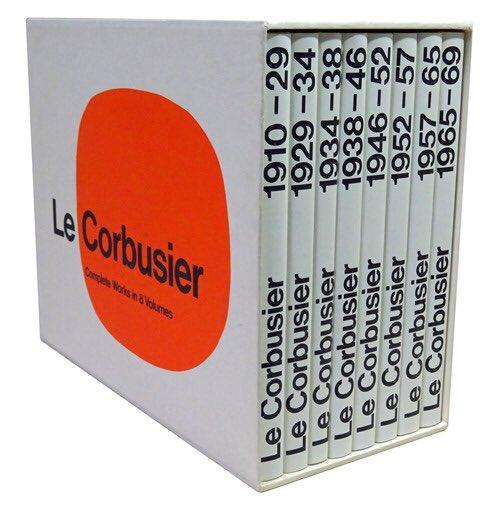 |
Le Corbusier : Complete Works (Oeuvre Complete) in Eight Volumes
|
| Description by publisher: The eight volumes of this extraordinary edition, which was published between 1929 and 1970 and has been reprinted repeatedly since then, show the wide range of Le Corbusier’s work. They document the work of the most influential architect of the 20th century. Developed in direct collaboration with Le Corbusier over 40 years, the set forms a unique and exhaustive inventory of his buildings, projects, sketchbooks, manifestos, drawings, and texts that have permanently changed the world of architecture.SHOP NOW → | |
 |
Le Corbusier Le Grand
|
| Description by publisher: A spectacular visual biography of Le Corbusier’s life and work – one of the twentieth century’s most influential architects. A decade after its first publication, the bestselling monograph Le Corbusier Le Grand is finally available in a new paperback edition. Documenting the life and work of one of the giants of twentieth-century architecture and design, the book presents an array of sketches, photographs, and correspondences, charting Le Corbusier’s vast and varied output artist who continues to fascinate those inside and outside the architectural world.SHOP NOW → | |
 |
Le Corbusier: The Built Work
|
| Description by publisher: Photographer Richard Pare has crossed the globe for years to document the extant works of Le Corbusier–from his first villas in Switzerland to his mid-career works in his role as the first global architect in locations as far-flung as Argentina and Russia, and his late works, including his sole North American project, at Harvard University, and an extensive civic plan for Chandigarh, India.Le Corbusier: The Built Work provides numerous views of each project to bring a fuller understanding of the architect’s command of space, sometimes surprising use of materials and color, and the almost ineffable qualities that only result from a commanding synthesis of all aspects of design. With an authoritative text by scholar and curator Jean-Louis Cohen, Le Corbusier: The Built Work is a groundbreaking opportunity to appreciate the master’s work anew.SHOP NOW → | |
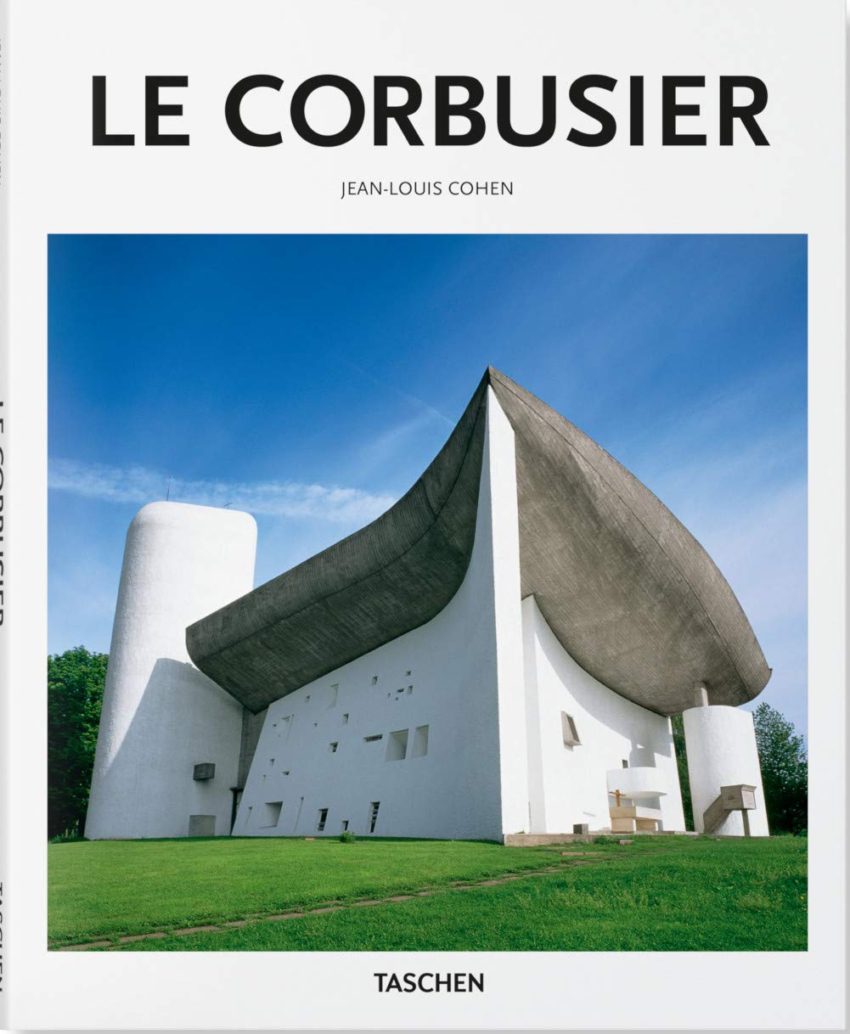 |
Le Corbusier (Basic Art Series 2.0)
|
| Description by publisher: This book presents some of Le Corbusier’s landmark projects to introduce an architect, thinker, and modern pioneer who, even in his unrealized projects, offered discussion and inspiration for generations to come.Born back in 1985, the Basic Art Series has evolved into the best-selling art book collection ever published. Each book in TASCHEN’s Basic Architecture series features an introduction to the life and work of the architect, the major works in chronological order, information about the clients, architectural preconditions as well as construction problems and resolutions, a list of all the selected works and a map indicating the locations of the best and most famous buildings and approximately 120 illustrations (photographs, sketches, drafts, and plans).SHOP NOW → | |
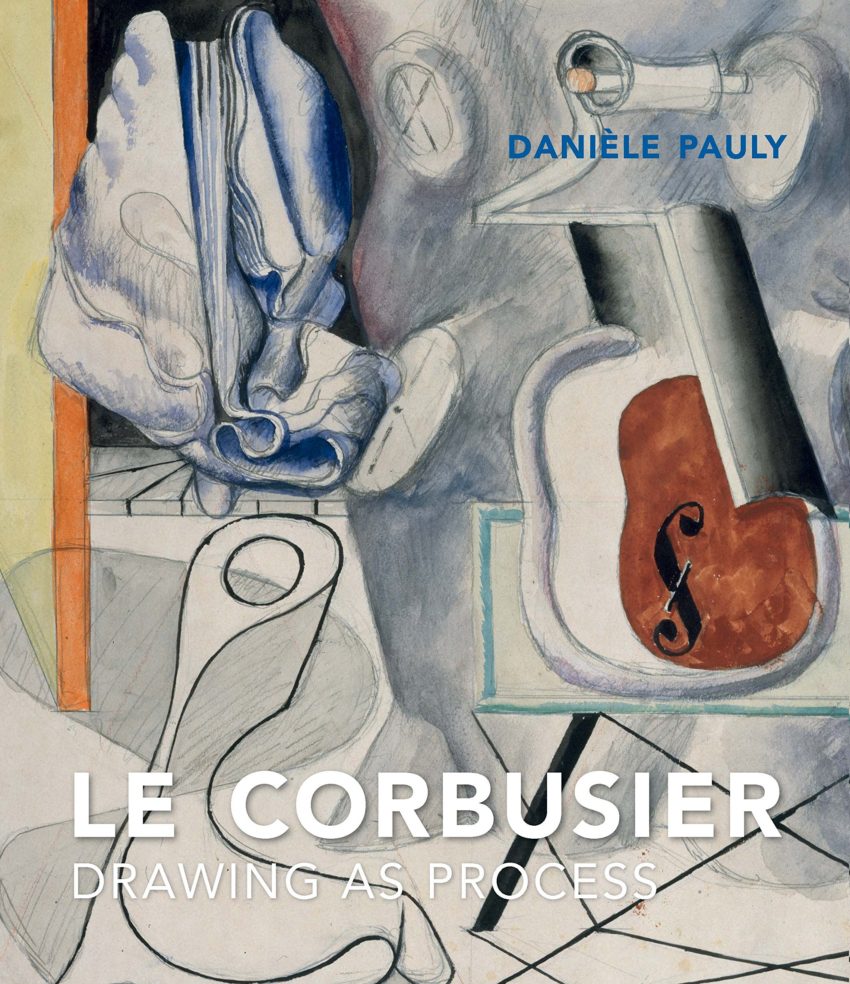 |
Le Corbusier: Drawing as Process
|
| Description by publisher: Charles-Édouard Jeanneret, known as Le Corbusier (1887–1965), is famous for transforming 20th-century architecture and urbanism. Less attention has been paid to his artistic production, although he began his career as a painter. Le Corbusier studied under Charles L’Éplattenier and, with the artist Amédée Ozenfant, founded the Purist movement in the manifesto After Cubism. Even after Le Corbusier turned to architecture, he continued to paint and draw. His thousands of drawings, rarely exhibited but meticulously stored in two watch cabinets from his family home, were particularly significant; he considered his work a draftsman fundamental to his creative process.Beautifully illustrated with more than 300 drawings that have never before been published for an English readership, this revealing book charts the evolution of Le Corbusier’s process from his youthful travels abroad to his arrival and maturation in Paris. Danièle Pauly shows how his drawings functioned within an intimate zone of private reflection and situate his work within the broader artistic and intellectual currents of Cubism, Purism, Primitivism, and Surrealism.SHOP NOW → | |
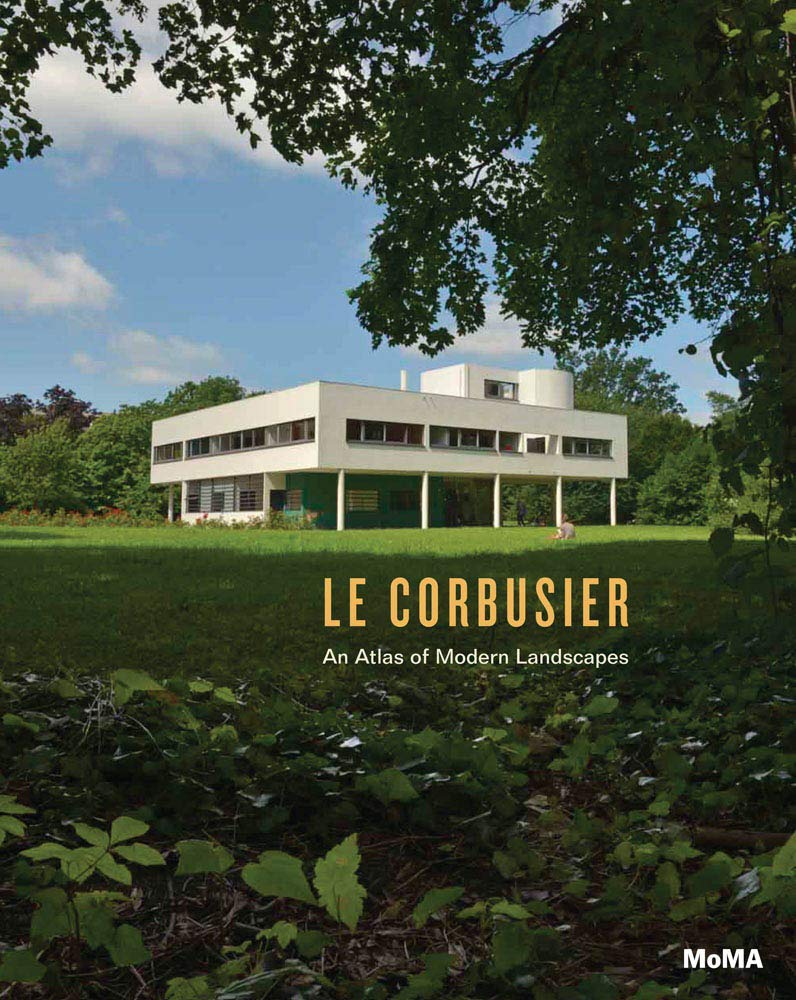 |
Le Corbusier: An Atlas of Modern Landscapes
|
| Description by publisher: In June 2013, The Museum of Modern Art presented the largest exhibition ever produced on Le Corbusier’s prolific oeuvre, encompassing his work as an architect, interior designer, artist, city planner, writer, and photographer. Over a six-decade career, this towering figure of modern culture constantly observed and imagined landscapes using all the artistic techniques at his command, including watercolors, sketches, paintings, photographs, and models.This accompanying publication, appearing 25 years after the Centre Pompidou released the seminal catalog Le Corbusier, une encyclopédie, aspires to become a new sourcebook, giving an account of research developed worldwide in recent decades. Reflecting the geographic extension of his designs and built works as well as his indefatigable wanderlust, the book is structured as an atlas, with topographical entries allowing for the discovery of the major sites and cities where Le Corbusier worked. Featuring essays by an international range of curators, scholars, and critics and a trove of archival images and materials from the Fondation Le Corbusier in Paris, this lavishly illustrated volume presents a wholly unique way to explore the life and work of one of the most important visionaries of our time.SHOP NOW → | |
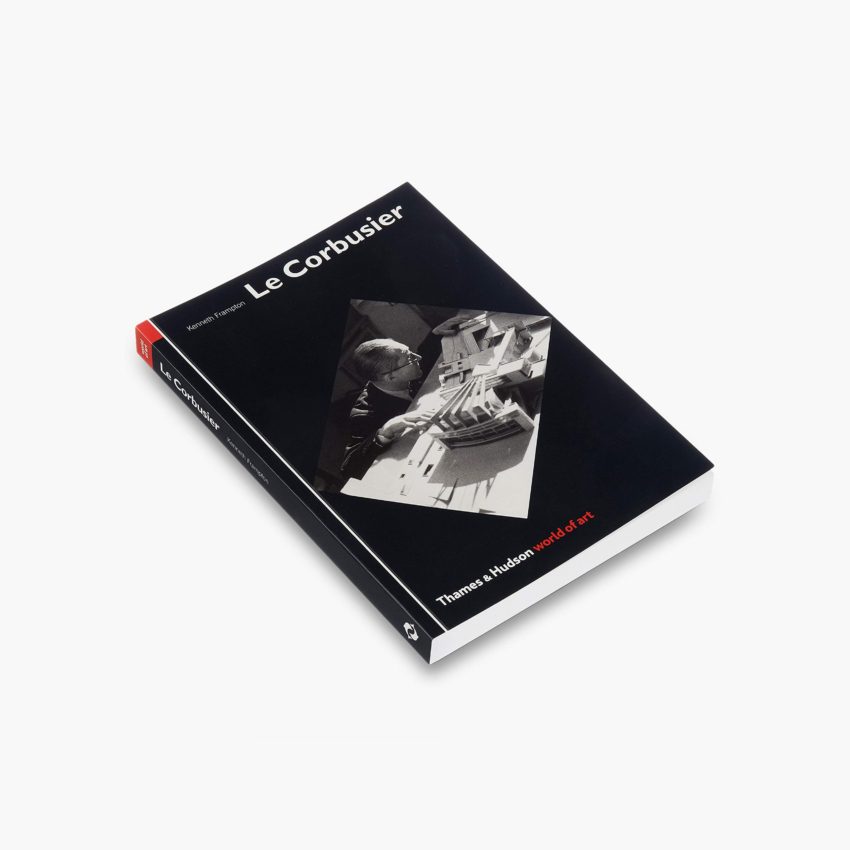 |
Le Corbusier (World of Art) by Kenneth Frampton
|
| Description by publisher: The richness and variety of Le Corbusier’s work and his passionately expressed philosophy of architecture have had a gigantic impact on the urban fabric and how we live. Weaving through his long and prolific life are certain recurrent themes — his perennial drive towards new types of dwelling, from the early white villas to the Unite d’Habitation at Marseilles; his evolving concepts of urban form, including Plan Voisin of 1925 with its cruciform towers imposed on the city of Paris, and his work at Chandigarh in India; and his belief in a new technocratic order. The distinguished critic and historian Kenneth Frampton re-examine all these facets of his artistic and philosophical worldview in light of recent thinking and present us with a Le Corbusier for the 21st century. SHOP NOW → | |
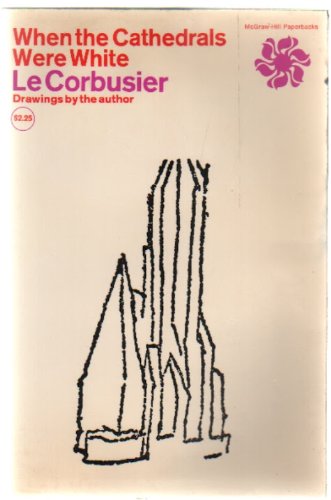 |
When the Cathedrals Were White by Le Corbusier
|
| Description by publisher: In his brilliant and incisive style, Le Corbusier examines the architecture and people of New York. He loves the people but finds the architecture haphazard and in need of planning. He proposes a new, beautiful, vertical New York through provocative prose and revealing drawings.SHOP NOW → | |
Other Recommended Books:
- Le Corbusier: The Chapel of Notre-Dame Du Haut at Ronchamp. Publisher: Royal Academy Publications (15 September 2015). Language: English
- Le Corbusier & Pierre Jeanneret: Chandigarh, India. Publisher: Edition Galerie Patrick Seguin; Bilingual edition (30 September 2014). Language: English
- Le Corbusier: The Complete Buildings. Publisher: Prestel; Annotated edition (21 November 2017). Language: English
- Case: Le Corbusier’s Venice Hospital and the Mat Building Revival (Case Series). Publisher: Prestel Pub (1 March 2002). Language: English
- Le Corbusier: Ideas & Forms. Publisher: Phaidon Press; 2nd Revised ed. edition (20 April 2015). Language:: English
- The Open Hand: Le Corbusier’s Chandigarh (AUGUST EDITIONS). Publisher: August Editions (1 December 2018). Language: English
- Le Corbusier’s Pavilion for Zurich: Model and Prototype of an Ideal Exhibition Space. Publisher: Lars Muller; Illustrated edition (31 January 2013). Language:: English
- Le Corbusier et son atelier rue de Sèvres 35. Oeuvre complète 1952-1957. Publisher: Editions Girsberger; 1st edition (January 1, 1958). Language: English
- Chandigarh Revealed: Le Corbusier’s City Today. Publisher: Princeton Architectural Press; Illustrated edition (4 April 2017). Language:: English
- Le Corbusier & Pierre Jeanneret. Publisher: Assouline Publishing; Bilingual edition (1 May 2018). Language: English
- Sacred Concrete: The Churches of Le Corbusier. Publisher: Birkhäuser; Revised edition (8 June 2020)Language: English
- Le Corbusier Redrawn: The Houses. Publisher: Princeton Architectural Press; Firsttion ed. edition (7 November 2012). Language: English
- Le Corbusier: Houses. Publisher: Toto; First Edition (1 June 2001). Language: English
- Toward an Architecture (Getty Research Institute). Publisher: Getty Research Institute; 1st edition (15 October 2007). Language: English
- Le Corbusier. Furniture and Interiors, 1905-1965. Publisher: Scheidegger and Spiess; First English Language Edition (15 September 2012). Language: English
- Le Corbusier: 5 × Unité d’habitation: Marseille, Rezé, Berlin, Briey-en-Forêt, Firminy. Publisher : Spector Books (September 17, 2019). Language: English
- Pavillon Le Corbusier Zurich: The Restoration of an Architectural Jewel. Publisher: Scheidegger and Spiess; New edition (15 June 2020). Language: English
- A Little House. Publisher: Birkhäuser; 2nd ed. edition (9 March 2020). Language: English
- Une petite maison (French Edition). Publisher: Birkhäuser; 2nd ed. edition (March 9, 2020). Language: French
- Atlas of Brutalist Architecture. Publisher: Phaidon Press; Reprint edition (18 November 2020). Language: English
- Le Corbusier: Unité d’habitation, Typ Berlin: Construction and Context. Publisher : JOVIS; Bilingual edition (April 7, 2020). Language: : English
- Le Corbusier: Paintings, drawings, and collages 1920-1964, 25 October – 24 November 1984. Publisher: Xavier Fourcade (1 January 1984). Language: English
- Le Corbusier (World of Art). Publisher: Thames & Hudson (1 June 2001). Language: English
- Chandigarh’s Le Corbusier: The Struggle for Modernity in Postcolonial India (Studies in Modernity and National Identity). Publisher: University of Washington Press; Illustrated edition (1 August 2002). Language: English.
- Le Corbusier Shodhan House (Residential Masterpieces) (Japanese and English Edition). Publisher: Ada Edita (25 April 2014). Language: Japanese, English
Le Corbusier: Precision-Engineered CAD Collections
At DWGLab, you can discover meticulously crafted CAD drawings featuring iconic works by Le Corbusier and other eminent architects, all designed for unparalleled accuracy and ease of use.
Quotes by Le Corbusier
Space and light and order. Those are the things that men need just as much as they need bread or a place to sleep.
– Le Corbusier
Architecture is the masterly, correct, and magnificent play of masses brought together in light. Our eyes are made to see forms in light: light and shade reveal these forms.
– Le Corbusier


